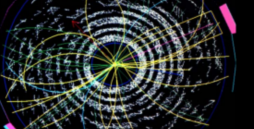Speaker
Mr
Felipe Garcia Ken Kamiya
(Universidade Federal do ABC)
Description
Based on the premise that the neutrino beam used in DUNE traverses the Earth’s crust on its journey from being produced until detection, we propose a non-standard interaction (NSI) between the neutrinos and the matter of the Earth’s crust. Such NSI can cause the change of the flavor and change the energy of the neutrinos. The phenomenon of the flavor oscillations that we know can produce changes that may be measurable from the analysis of the oscillation parameters. In this work we study how the proposed NSI can change the sensitivity of the DUNE in measuring the values of the parameters δCP, θ13, and θ23. NSI also affect the determination of the hierarchy of the neutrino masses.
For this study we performed simulations using the General Long Baseline Experiment Simulator (GLoBES). We determined optimal values for the oscillation parameters from the literature and tested some values for δCP. We used a method of χ² to test different values of δCP, θ13, and θ23. This way we were able to determine regions of sensitivity. We chose nine distinct forms of mass density distribution in the baseline and determined how the oscillation parameters change for each of them. When we compared the various sensitivity curves we elaborated a relative χ² for the purpose of determining the influence of the distribution of matter. Finally, we determined which values the parameters describing the NSI εαβ should be in order to be similar to the interactions we know.
With these studies, we conclude that the matter density distribution does not significantly change the sensitivity of the DUNE in measuring the parameters δCP, θ13, and θ23, however, the presence of the NSI causes sufficiently large changes in the sensitivity of the DUNE. NSI is also affected by mass hierarchy and, in this way, it can help to determine it. After an accurate study of NSI on the propagation, we intend to study NSI in the interaction, and how it may affect the events in LArTPCs.
Primary author
Mr
Felipe Garcia Ken Kamiya
(Universidade Federal do ABC)
Co-author
Celio Moura
(UFABC)
